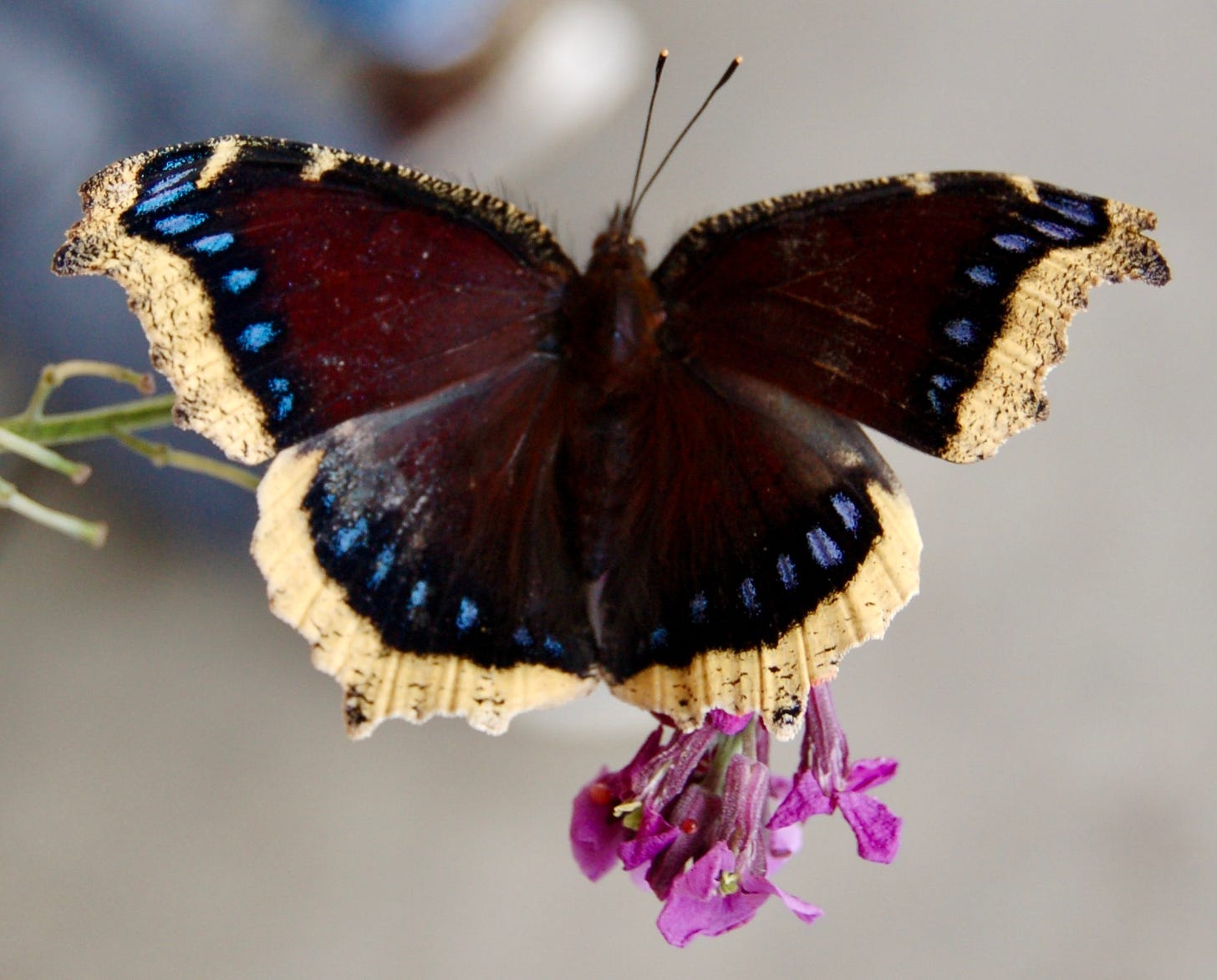A mourning cloak butterfly raised in our classroom, about to be released outside
One of my favorite units to teach K-2 students is “caterpillar to butterfly.” There are a lot of reasons why.
First of all, it’s fascinating to observe the tiny caterpillars crawling around, eating and pooping and growing larger every day. Then one day, they hang upside down and transform into chrysalises. After a few weeks, butterflies emerge. It’s an amazing process to witness. There are some great videos available, but seeing the real thing is priceless.
Secondly, it’s easy to come up with butterfly art projects, in so many mediums. There are also lots of relevant videos available online (although it can take a surprising number of hours to find ones that are appropriate for your particular group!) And you can talk about the difference between fiction/ made-up stories like The Very Hungry Caterpillar by Eric Carle, and true, science-based nonfiction stories like National Geographics’s Explore My World: Butterflies.
Another fun thing is saying the word “metamorphosis.” Really. It’s impressive to use a 5-syllable word, especially when you actually know what it means. And (like many things) it’s not that hard to learn when you break it into steps and then practice it: Clap your hands to each beat and say it: Met-a-mor-pho-sis! One kindergartner was the hit of her parents’ party when, complete with hand gestures, she sang the life cycle of the butterfly: “Egg, caterpillar, chrysalis, then comes a little metamorphosis…” and then gave the party guests a brief life sciences lesson.
I also like the opportunity to reduce the power of poop.
Little kids love to be dramatically grossed out by poop, and to make poop jokes and poop insults. (For example, I have been called a “poopy head” on countless occasions, and I’m certain I’m not alone.)
The subject of poop tends to provoke immature reactions. This is not unexpected when you are dealing with 5- to 7-year-olds, of course, but raising these caterpillars is a science project.
So when kids would look at the caterpillar droppings and giggle, “Yuck! Gross! That’s disgusting!” I would reply, “When you were younger, like back in preschool, you laughed about poop. That’s OK, because that’s what preschoolers do. But now that you are Room 7 scientists, you understand that everything that eats has to poop. Caterpillars, people, cats, dogs, fish, dinosaurs, you name it - if it eats, it’s gotta poop. That’s scientific fact.”
When poop does a metamorphosis from silliness into science, that’s clear progress, and for that alone, caterpillars have earned my deep respect.




